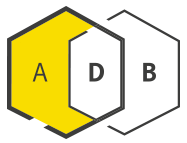Compound ID | 2033
Lomefloxacin
Synonym(s): Maxaquin | NY-198
Class: Fluoroquinolone
| Spectrum of activity: | Gram-positive & Gram-negative |
| Details of activity: | Binds to type II topoisomerases, gyrase and topoisomerase IV and thus, inhibits DNA cleavage and ligation reactions. It kills bacterial cells by increasing the concentration of enzyme–DNA cleavage complexes, thereby inhibiting cell replication. |
| Description: | Synthetic quinoline derivative. Mostly topical use |
| Year first mentioned: | 1987 |
| Highest developmental phase: | Approved by FDA in 1992 |
| Development status: | Discontinued |
| Reason Dropped: | Phototoxicity and central nervous system (CNS) effects |
| Chemical structure(s): | |||||||||||
|
|
| External links: | |
| PubChem link: | https://pubchem.ncbi.nlm.nih.gov/compound/3948 |
| Guide to Pharmacology: | lomefloxacin |
| Citations: |
|


